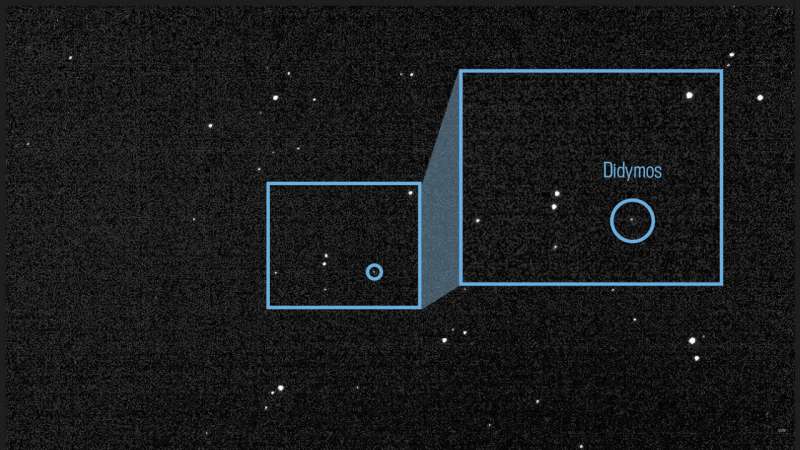
Didymos is a double-asteroid system that includes its target, Dimorphos. DART will deliberately crash into Dimorphos. While the asteroid poses no threat to Earth, this is the world's first test of the kinetic impact technique, which can be used to defend against asteroids.
The Didymos Reconnaissance and Asteroid Camera for Optical navigation (DRACO) took 243 pictures of Didymos and its moonlet Dimorphos.
The Didymos system is about 20 million miles away from DART, and navigation camera experts were unsure if DRACO could spot the asteroid yet. The team was able to identify Didymos with the help of the 243 images taken by DRACO.
Elena Adams is the DART mission systems engineer at the APL and she said that the first set of images is being used as a test. The quality of the image is similar to what we could get from a ground-based telescope, but it is important to show that DRACO is working properly and can see its target to make any adjustments needed before we begin using the images to guide the spacecraft into the asteroid.
Although the team has already conducted a number of navigation simulations using non-DRACO images of Didymos, DART will eventually depend on its ability to see and process images of Didymos and Dimorphos. DART needs to self-navigate to impact successfully with Dimorphos.
"Seeing the DRACO images of Didymos for the first time, we can iron out the best settings for DRACO and fine- tune the software," said Julie Bellerose, the DART navigation lead at NASA's Jet Propulsion Laboratory. We will get a more precise determination of Didymos' location in September.
The DART team will execute three trajectory correction maneuvers over the next three weeks in order to further reduce the margin of error. The position of the target Dimorphos will be known within 2 kilometers of the final maneuver. DART will be able to guide itself to the asteroid moonlet on its own.
DRACO observed Didymos in August.